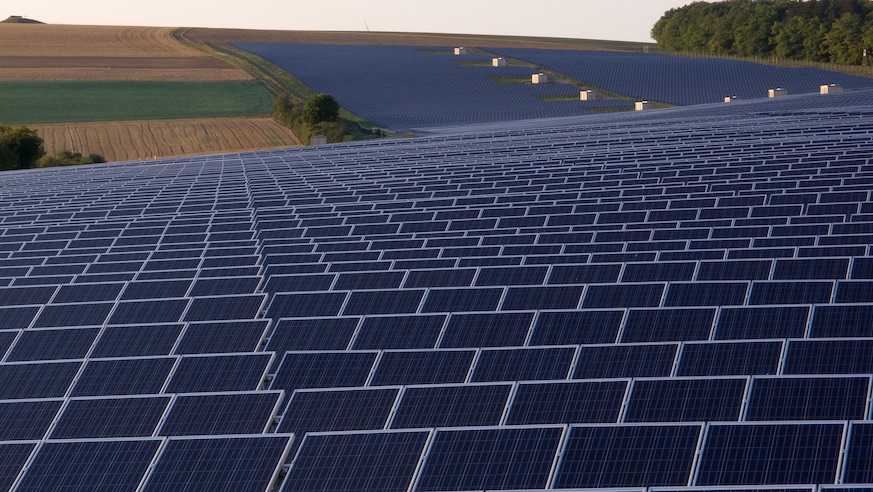The City of Philadelphia and SEPTA recently announced moves toward getting more electricity from green (solar or wind) sources, and now, the South Jersey-based Delaware River Port Authority (DRPA) has revealed similar, even grander plans.
DRPA’s board in November 2018 approved plans to source more than 50 percent of the electricity they use and to power PATCO trains from South Jersey to Philly using solar power.
To do it, they aim to set up solar panels on top of PATCO stations and bridges across the Delaware River. The Commodore Barry Bridge, Betsy Ross Bridge, and their headquarters, One Port Center on the Camden waterfront, along with Lindenwold Yard, Lindenwold Station, Woodcrest Station, Ashland Station, and Ferry Ave Station will also host solar panels. Solar canopies would go over parking, storage and work areas, with ground mounted arrays and ballasted flat roof mounts also used for solar panels.
Related: Kenney to move forward on new solar power plan
All told, DRPA plans to set up a 22-Megawatt solar panel array. That’s about five times more power than Lincoln Financial Field generates in green power (four megawatts) from its 11,108 solar panels, the largest solar-panel array in Philadelphia, plus 14 wind turbines. It would be six times larger than SEPTA’s planned three-megawatt solar panel array on the roofs of its three largest maintenance facilities. The project is targeted for completion by October 2020.
“The Authority’s strategic goal to advance sustainability and environmental stewardship in 2019 and beyond is improving the environmental impact of the organization,” Christina Maroney, Director of Strategic Initiatives at DRPA/PATCO, said via email when asked why the proposal came about.
But even if you don’t care about climate change or the environment, solar and other renewable energy sources – which for years have been called overly expensive and inefficient by detractors – increasingly seem to make economic sense for municipal agencies and authorities.
Related: SEPTA looking to utilize more solar, wind power
DRPA said over 20 years, they expect to save $12.2 million on electricity under a 20-year power-purchase agreement with Sunpower Corporation, by locking in solar prices that are 2.3 cents lower per kilowatt-hour than the blended rate they currently pay for electricity.
Likewise, the City of Philadelphia says it will save money through a new 20-year power purchase agreement to meet 22 percent of city government’s electricity needs from a proposed 70 megawatt solar facility in Adams County. SEPTA is reviewing proposals to source 10 to 20 percent of their electricity needs from green sources, and Temple University is rumored to be looking into a long-term green energy contract as well. (Temple did not immediately respond to requests for comment). Earlier this week, Gov. Tom Wolf declared new environmental priorities via executive order – including a call for the state to procure approximately 40 percent of its electricity needs from renewable sources.

Green goals, economic sense
“It’s really a great time to be going solar. With long-term contracts and commitments, the price of that energy is now lower than fossil fuel energy,” said Sharon Pillar, a Pittsburgh-based consultant for Sharon Pillar Environmental Entrepreneurs (E2). “The panels last 25-30 years or more. The savings over that time is great, and it’s also predictable. Grid electricity prices, we just keep seeing those go up, and fossil fuel electricity, we anticipate continuing to see that going up, and its also volatile – we don’t know what it is for year to year.”
E2’s Pennsylvania Clean Jobs report estimated there are currently 86,000 clean energy jobs in the state (8,714 in solar and wind energy), a number that could grow with new projects.
Another reason for a current rush of investment, Pillar said, could be the federal solar tax credit – which allows a 30 percent federal tax deduction– will be stepped down at the end of 2019 (to 26 percent in 2020, 22 percent in 2021, and ending at a permanent 10 percent in 2022 for commercial projects)
“The conventional wisdom was it is too expensive,” said Brent Alderfer, founder and CEO of Community Energy Inc., whose project Adams Solar LLC entered into a Power Purchase Agreement with the city of Philadelphia. “In the last three years the solar industry has hit price points and efficiency of technology that let solar compete.”
But there’s also been a boost from technological development in the converters and utility-scale batteries that store solar-generated electricity, Alderfer said. Solar arrays can now more efficiently store power for use at night or on stormy days when the panels aren’t receiving sunlight to produce electricity.
Not just municipalities, but private businesses are buying up more and more green power, from Facebook and Amazon to Microsoft, which recently signed a power purchase agreement with a 90-Megawatt wind energy farm in Potter County, Pa.
And while President Trump’s 2018 tariffs on solar panel imports caused a fearful outcry among some industry observers – and lost thousands of people their jobs – in the long run, they were just “a bump in the road,” Alderfer said.
“You really can’t overestimate the leadership of these municipalities like Philadelphia and companies like Amazon and others that are stepping up and saying, ‘We’re not waiting for a federal directive, we’re going to get the economics worked out right now of fighting climate change.’ They don’t have to do that,” Alderfer said. “The leadership is encouraging. What’s scary is what are the consequences if we keep going down the same path of putting CO2 in the atmosphere.”





























